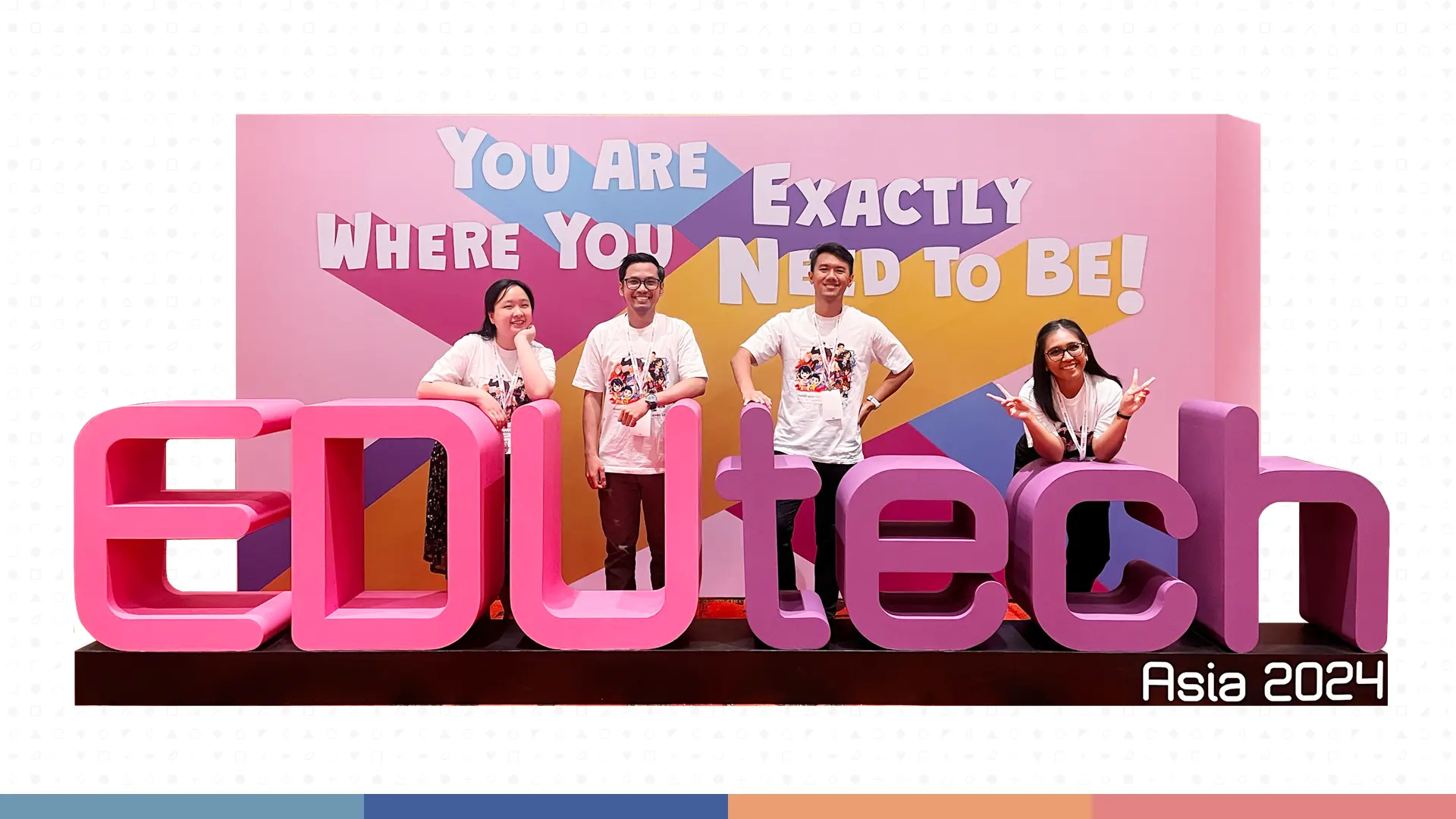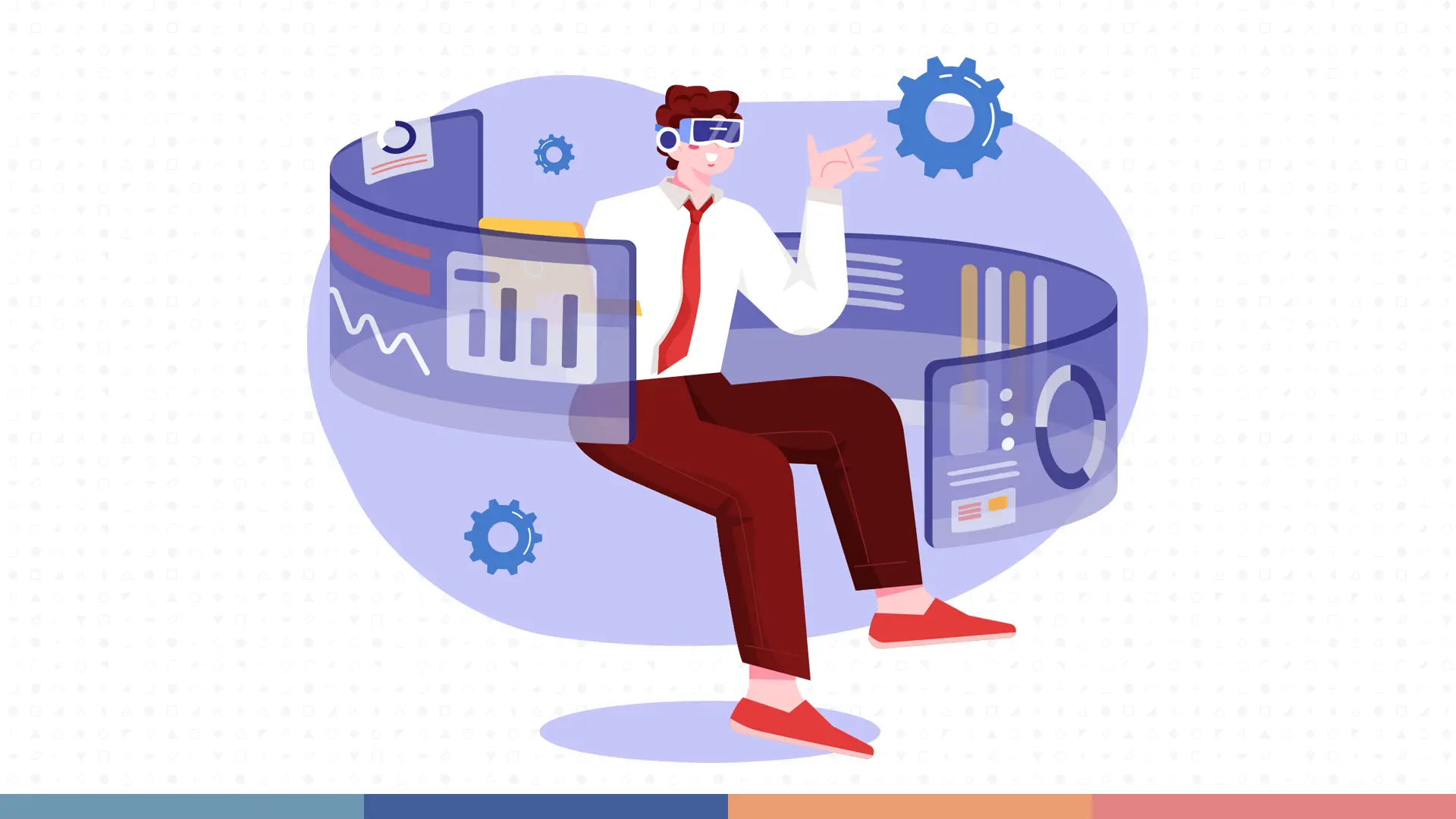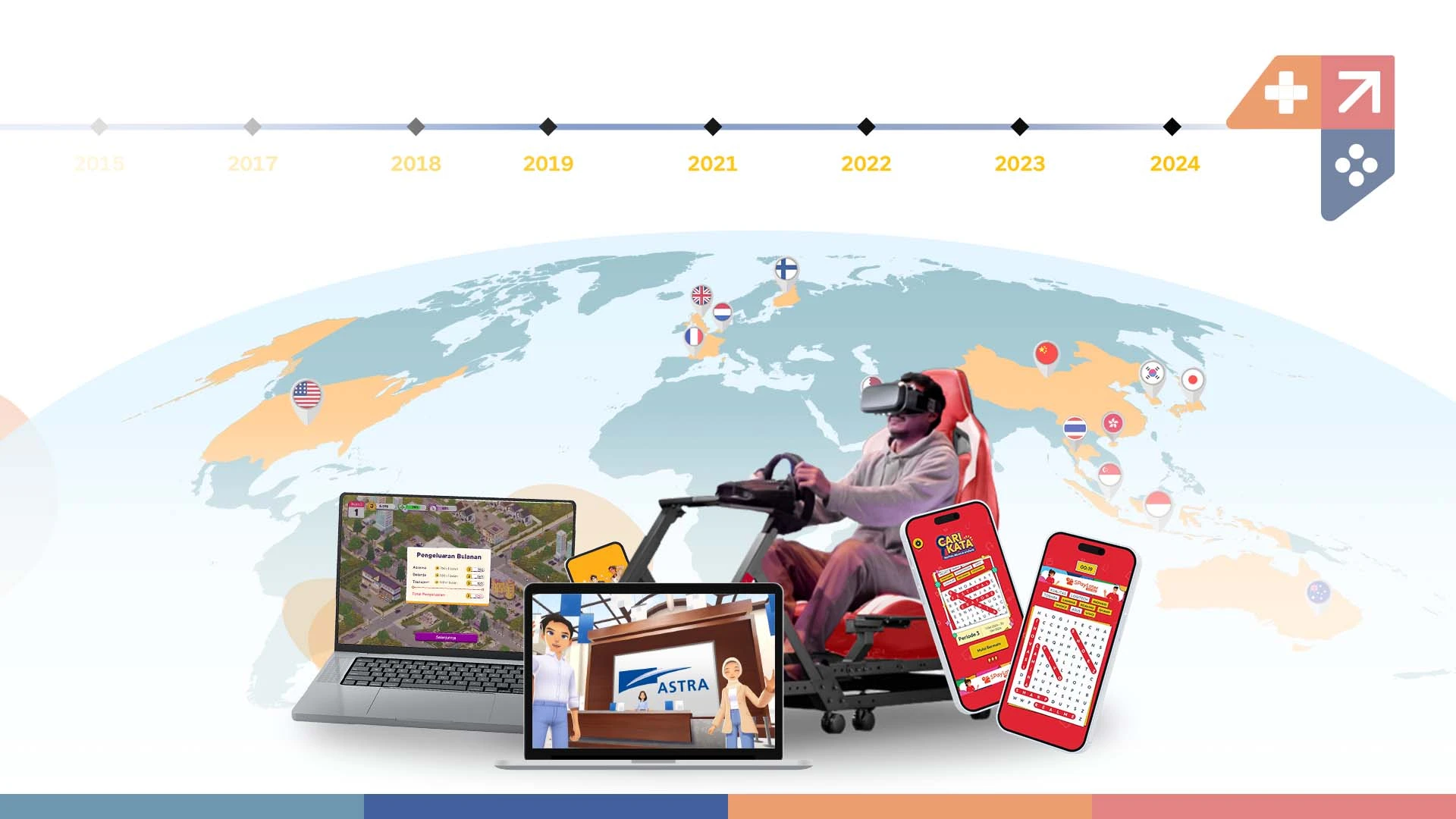Webinar Recap: Unleashing the Power Gamification in Business
Games: who doesn’t love playing them? Whether on arcades, PCs, consoles, or mobile phones, our off-time, break time, or just killing time is often spent immersed in games. In fact, studies reveal that people spend an average of 7 hours and 7 minutes each week gaming.
But what if we told you that this activity is not only for our entertainment? The power of what games have brought us has slowly become not just for playing. In the less fun part of our lives, it can sometimes be challenging, coming off as menial, boring, and frustrating. What if we could experience the same enjoyment we find in playing games with other activities, such as business processes or tests?
Now, let’s explore gamification—how we can bridge the gap and infuse the “fun” elements of games in many processes. This is where our journey begins as game developers. We see an opportunity to bring the joy of gaming into other aspects of life. If you’re seeking ways to engage your audience, customers, and employees, this article is for you.
We recently conducted a webinar on gamification and its potential for business. With this recap, we will look back at the important points of discussion from the webinar.
About the speaker

Junialdi Dwijaputra, or better known as Jun, is a gamification expert with experience in creating and implementing gamification solutions for various businesses and organizations. His expertise in gamification stems from his role as a research and product manager, driven by a passion for learning and innovation. Jun’s diverse background has paved the way for his journey into the world of gamification. He is committed to empowering individuals to achieve their goals and leveraging technology to make the world a better place. If you are interested in learning how to apply gamification to your projects, Jun is the person to talk to!
What is Gamification?
We use game elements or principles and mechanics from games in non-game applications. In this case, many trends are emerging, especially in the business sector. So, how can games help businesses achieve their objectives?
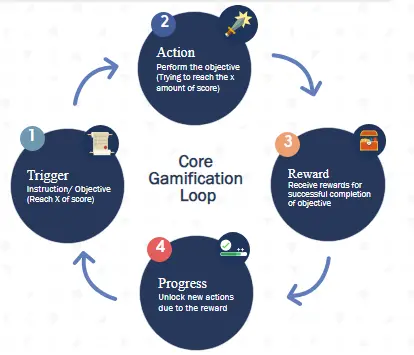
Trigger
Firstly, we need to identify what we want to achieve in the business context. Is it acquisition, engagement, or a direct plunge into sales? For instance, in the field of learning, there may be an increase in competence after a process like a pretest. They learn through a gamified process until the post-test, which must be measurable. Therefore, we shouldn’t just implement a game in an application straight away; we need to look at the actual objectives we want to achieve.
Action
Next, we translate it into an instruction, where users are asked to take certain actions to relate to the objectives expected by the gamification developer or the company that is already using gamification services.
Reward
Finally, users can receive rewards, either directly, like coins or points, or psychological fulfillment rewards; realizing, “Oh, it turns out we can find fulfillment in the time we’ve invested.”
Progress
And eventually, they make progress, whether they level up or their avatar progresses. This is commonly implemented in the process of gamifying business processes. So, we must also know which business process we want to gamify and what its actual goal is.
Because, if we don’t know the goal, sometimes it’s difficult to evaluate the gamification process that has been done. So, once again, we need to know the purpose of why we are undertaking the gamification process.
Gamification can be implemented for various business objectives
Acquisition
Typically, in the early stages, a company’s primary focus is on increasing the number of users. To boost acquisition, businesses can integrate Player versus Player (PvP) mechanics, creating a competitive edge that attracts and engages new users. Additionally, implementing a referral program within the gamification strategy encourages current users to refer others, expanding the customer base organically.
Engagement
Engagement involves figuring out how to integrate existing mini-games into the ecosystem of a platform; whether it’s an e-commerce platform or a logistics company. Essentially, with the presence of mini-games, it’s not just about embedding them, but there are certain metrics that need to be achieved. With the inclusion of mini-games, metrics within the platform, such as retention and duration, can be tracked through gamification.
For increased engagement, incorporating casual mini-games into non-game applications can be highly effective. These games provide a fun and interactive way for users to stay involved with the application. Furthermore, retention-focused rewards, such as exclusive bonuses or loyalty points, contribute to keeping users engaged over the long term.
Sales
In the realm of sales, businesses can integrate gamification seamlessly. In-line campaigns that include gamified elements make the sales process more interactive and enjoyable for users. Implementing a tiered rewards system within these campaigns encourages users to make purchases, unlocking progressively valuable rewards as they move through different tiers.
Gamification’s Projected Market Size Value (2020 – 2025)
Gamification market size is projected to grow from USD 9.1 billion in 2020 to USD 30.7 billion by 2025, at a Compound Annual Growth Rate (CAGR) of 27.4% during the forecast period.

Pattern of Gamification Solutions
Based on the gamification patterns that have come into Level Up powered by Agate over the past 14 years, we have identified a pattern:
Marketing Solutions
In-App Enhancement
Built to work directly with existing systems, in-app enhancements can take the form of game, progression mechanics, and reward systems.
Standalone Advergames
Tailored game solutions built with specific sales, marketing, or promotional goals in mind.
On-Ground Activations
Proven to catch eyeballs and gather a crowd, on-ground activations utilize the latest technologies to create amazing experiences for brands and consumers alike.
Learning Solutions
Gamified Learning Applications
Utilizing the latest proven trends in learning and development, we incorporate game design thinking to create powerful motivational learning tools.
Game-Based Assessment
Taking on the guise of an interactive game, game-based assessments have become a powerful assessment tool among the world’s most sophisticated companies in need of top-tier talent.
Immersive VR Training Simulations
A comparatively cost-efficient solution for technical training and immersion, our VR simulations use cutting-edge technologies to create a virtual, risk-free training environment.
Trends in Gamification
Growth of In-App Gamification
In-app gamification will undoubtedly continue to grow as companies persist in their digital transformation efforts, not only during the pandemic but also as an ongoing process. Moreover, there will be new entrants in the market seeking to embark on digital transformation or integrate their platforms with gaming elements. While in previous years, it was predominantly e-commerce platforms embracing gamification, today, various other applications leverage gamification, incorporating it into specific events. In this context, gamification serves to support and enhance multiple aspects. When implemented, it not only elevates competition but also triggers curiosity and creates a sense of control among users.
AI for Personal Gamification Experiences
AI is booming this year, with nearly every company seeking AI solutions. In the realm of gamification, numerous implementations are possible by integrating AI technology into existing platforms or products. For example, if a company already has a Learning Management System (LMS), the system can be integrated with a Large Language Model (LLM). If there’s an existing Standard Operating Procedure (SOP), it can be embedded in the LLM, allowing for quick creation of custom quizzes, personalized user interfaces through gamification, and even chatbot interactions using AI.
AI in gamification personalizes experiences through user data analysis, adapts gameplay in real-time, provides intelligent feedback, generates customized content, offers insightful data analysis, and automates management processes, enhancing engagement and learning outcomes.
Usage:
- Avatar-Based Gamified Chatbot for Marketing
- Data-Driven Gamified Corporate Learning Platform
AI for Personal Gamification Experiences
AI is booming this year, with nearly every company seeking AI solutions. In the realm of gamification, numerous implementations are possible by integrating AI technology into existing platforms or products. For example, if a company already has a Learning Management System (LMS), the system can be integrated with a Large Language Model (LLM). If there’s an existing Standard Operating Procedure (SOP), it can be embedded in the LLM, allowing for quick creation of custom quizzes, personalized user interfaces through gamification, and even chatbot interactions using AI.
AI in gamification personalizes experiences through user data analysis, adapts gameplay in real-time, provides intelligent feedback, generates customized content, offers insightful data analysis, and automates management processes, enhancing engagement and learning outcomes.
Usage:
- Avatar-Based Gamified Chatbot for Marketing
- Data-Driven Gamified Corporate Learning Platform
Virtual Events
Although the metaverse trend has somewhat subsided recently, many metaverse platforms still exist and continue to thrive, especially when they succeed in creating a comprehensive ecosystem.
The gamification of corporate events remains a hot trend, especially when incorporating live music, customized playlists, and interactive real-time games.
Usage:
- Education
- Networking and Socializing
- Incentivizing Participation
- Exhibitor Engagement
- Post-Event Engagement
Gamification in People Growth
Gamification Increase Engagement Level
Gamification in learning management systems elevates student performance by 34.75%, with challenge-based approaches enhancing outcomes up to 89.45%.
Gamification Increase Retention Rate
Gamification boosts retention up to 90% by actively engaging learners. Studies show significant increases in retention periods (50%) and test scores (40%) with social gamification in online education.
Gamification improves cognitive development
Digital games enhance brain efficiency, improving visuospatial and attention skills. Studies indicate gaming boosts cognitive skills, memory, and impulse control.
- Set Your Business Objective
- Set your Main Target User
- Design
- Technical Feasibility
If you want to know more about how you can gamify your business, contact us directly through here, we will assist you in getting your activity gamified with Level Up powered by Agate!
Learn more from our case studies here.
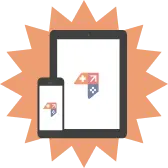
If you are interested in learning more about gamification and how it can benefit you or your organization
Check out our gamification services page and contact us today. We are ready to help you create a gamification experience that aligns with your needs and preferences.
Article Authors

Junialdi Dwijaputra

Dias Setyanto
Related Articles
- All Posts
- All
- News-EN
